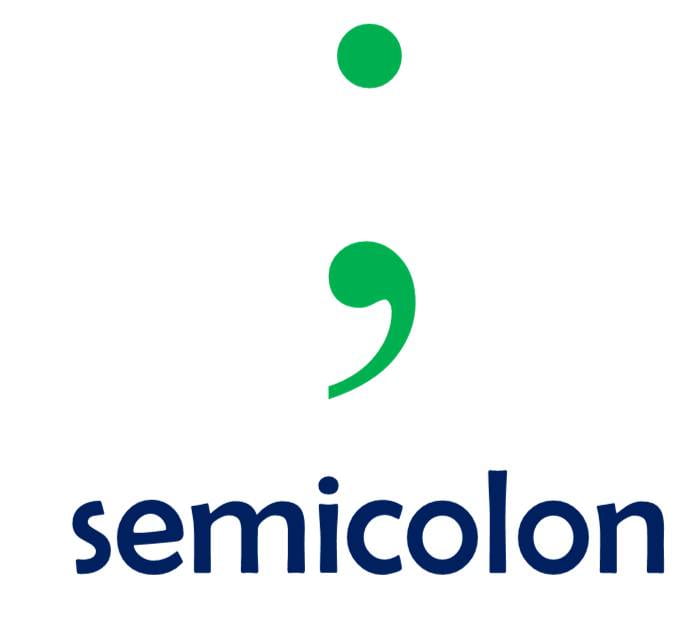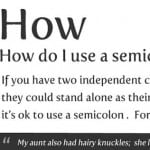Semicolon

Semicolons help to make your writing clearer and more sophisticated by joining together related ideas. A semicolon is a medium-length pause; longer than a comma, but less than a full stop.
Semicolons are used in three main circumstances:
.
1. To link together two closely-related independent clauses.
An independent clause is a collection of words that can stand as its own sentence. A semicolon can be used to join together two independent causes with a coordinatoing conjunction (joining word), if they are very closely related. The second independent clause should explain something about the first.
If you are using a coordinating conjunction (and, but, so, nor, or, yet or for) then use a comma, not a semicolon.
For example:
Felicity couldn’t sleep last night. She had too much on her mind.
Felicity couldn’t sleep last night; she had too much on her mind.
.
My friend doesn’t like leaving early. He’s afraid he’ll miss something.
My friend doesn’t like leaving early; he’s afraid he’ll miss something.
.
2. To separate long entries in a ‘monster list’.
Normally a comma is used to separate entries in a list. However, sometimes a list may need to include very long entries or descriptions, which themselves include commas. Using commas in this situation can make it very difficult to determine what is being separated in the list, so a semicolon is used instead to make things clearer.
For example:
The are a number of reasons for the explosion: the high temperature, which made the reaction occur quicker; the lack of water, which made the substances more unstable; and the scientist’s lack of coffee, which made them cranky.
Our classmates have family all around the world, coming from Melbourne, Australia; Richmond, New Zealand; Newcastle, England; and Lima, Peru.
.
3. Whenever the words such as however, therefore, for examples or in fact are used in the middle of a sentence to link main clauses.
The words however and therefore are ‘conjunctive adverbs’, while in fact and for example are ‘transitional expressions’. Whenever one of these is used, they must be preceeded by either a full stop (i.e. they must occur at the beginning of a sentence) or a semicolon (if they occur within a sentence).
For example:
So far you have made good progress; however, there is still a long way to go before you can consider yourself a master.
People can often make foolish decision; for example, Joe decided to play video games when he had two assignments due.
.
.
Video Demonstrations
You may also find that this infographic is a useful (and amusing) way of understanding how semicolons should be used (just click on the thumbnail below:
.
.
Semicolon Worksheets:
.
.
.


Recent Comments